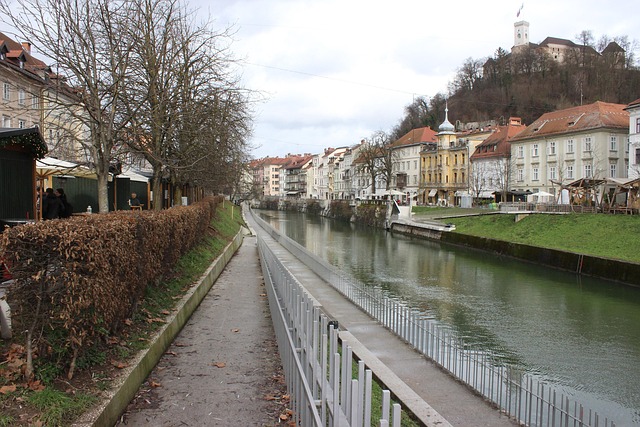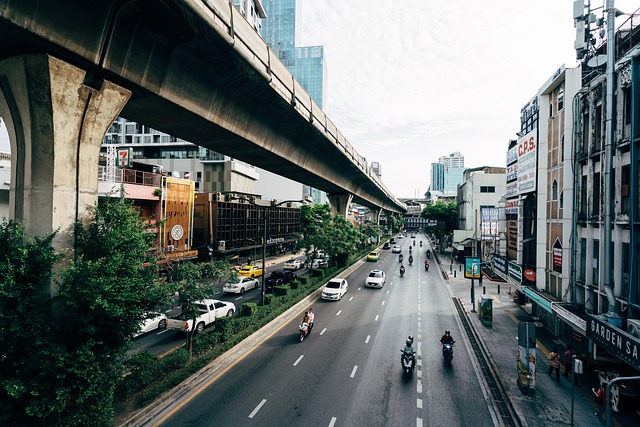The road network in Gadap Town, Karachi, combines modern and traditional urban planning, with inconsistent maintenance leading to challenging driving conditions, notably during monsoon. Local authorities are actively repairing and upgrading key roads, aiming for better connectivity and improved mobility. Despite these efforts, significant issues like narrow streets, potholes, inadequate drainage, and lack of signage/lighting persist, exacerbated by dense population and rapid urbanization. Potential solutions include regular road maintenance, enhanced lighting, effective drainage systems, promotion of public transport, and carpooling to alleviate traffic congestion and infrastructure pressure.
“Exploring the current state of road infrastructure in Gadap Town, Karachi, this article delves into the challenges plaguing the region’s transportation network. With Karachi’s bustling streets and growing population, understanding the condition of roads in Gadap Town is vital for both residents and visitors. We analyze the existing issues, from potholes to inadequate signage, and propose potential solutions to enhance safety and accessibility. By addressing these challenges, we aim to contribute to the ongoing efforts to improve the urban mobility landscape of Karachi.”
- Current State of Road Infrastructure in Gadap Town, Karachi
- Challenges and Potential Solutions for Improving Road Conditions
Current State of Road Infrastructure in Gadap Town, Karachi

The road infrastructure in Gadap Town, Karachi, reflects a mix of modern and traditional urban planning. While some roads are well-maintained, featuring smooth asphalt and adequate drainage systems, many others struggle with cracks, potholes, and uneven surfaces. This disparity often leads to challenging driving conditions, particularly during the monsoon season when heavy rains exacerbate existing issues. The lack of proper signage and lighting in certain areas poses additional risks, making it crucial for both residents and visitors to exercise caution while navigating these routes.
Despite these challenges, efforts are underway to enhance the road network. Local authorities have initiated projects aimed at repairing and upgrading key thoroughfares, with a focus on improving connectivity within the town and linking it more seamlessly to other parts of Karachi. These initiatives hold promise for better mobility and safety, promising a transformative impact on the daily lives of Gadap Town’s inhabitants.
Challenges and Potential Solutions for Improving Road Conditions

The road conditions in Gadap Town, Karachi, present several challenges that impact both daily commuters and emergency services. Narrow streets, potholes, and inadequate drainage systems are common issues that not only hinder smooth traffic flow but also increase the risk of accidents. The dense population and rapid urbanization in the area have put immense pressure on the existing infrastructure, exacerbating these problems.
Potential solutions to improve road conditions include a multi-pronged approach. First, the local government should prioritize road maintenance and repair programs to fix potholes and ensure proper surface treatment. Second, enhancing street lighting can make navigating these roads safer during the evening hours. Third, implementing effective drainage systems can mitigate water logging, reducing both traffic congestion and the risk of accidents. Additionally, promoting public transportation and encouraging carpooling could help reduce vehicle volume on the roads, thereby alleviating pressure on the existing infrastructure.
The road network in Gadap Town, Karachi, faces significant challenges, impacting the overall connectivity and accessibility of the area. However, by addressing the identified issues and implementing sustainable solutions, it is feasible to enhance the current state of infrastructure. Balancing urban development with efficient road management strategies is crucial for the future growth of Karachi. Investing in robust road maintenance and timely upgradation will not only improve traffic flow but also ensure safer commuting for residents and visitors alike.





Leave a Reply